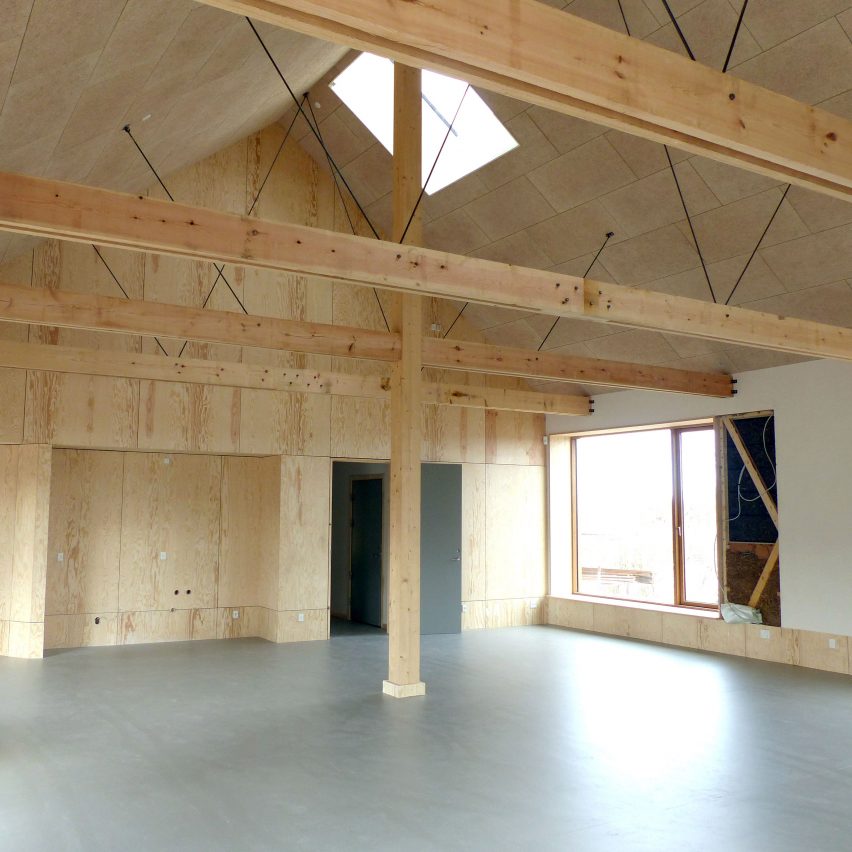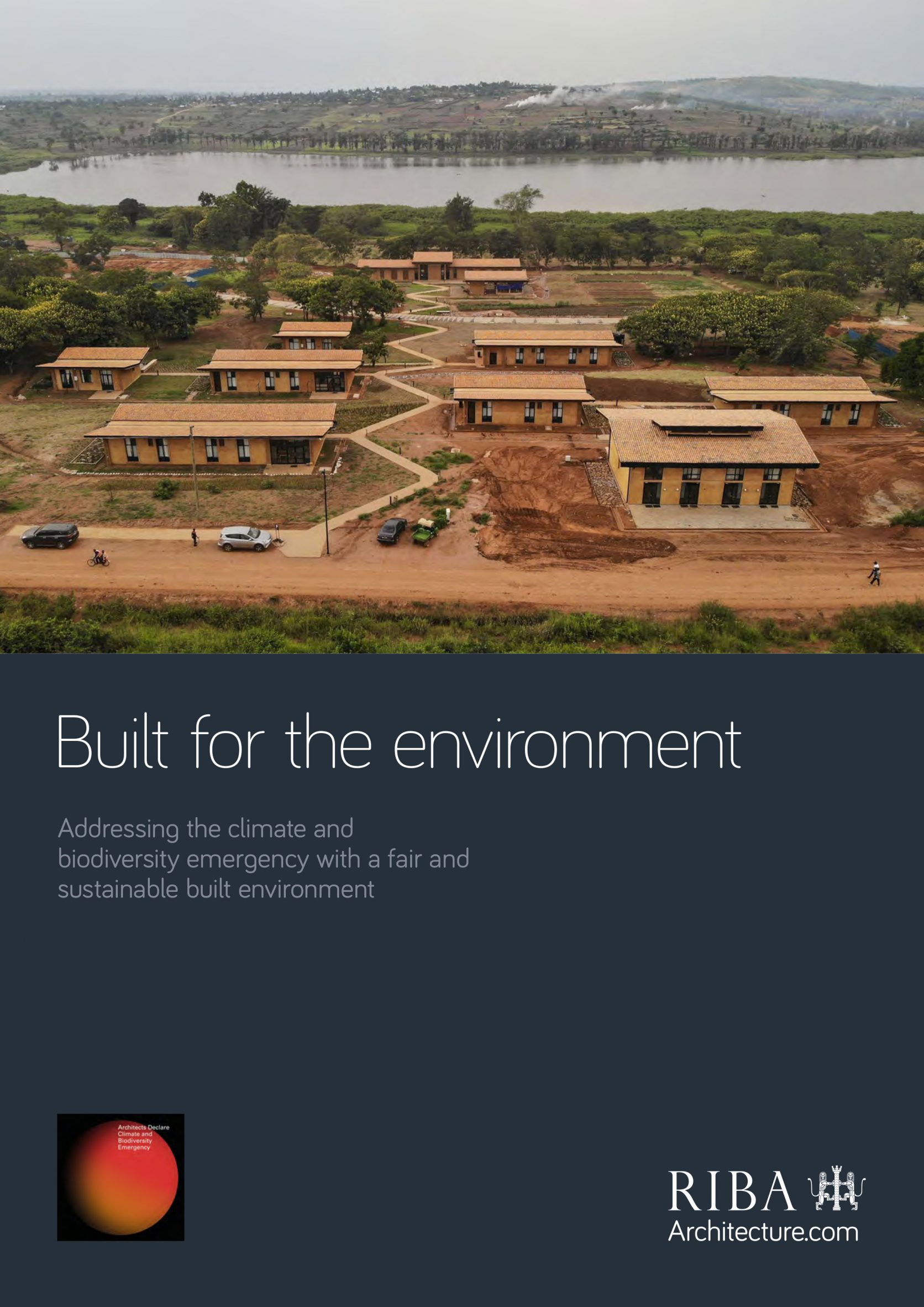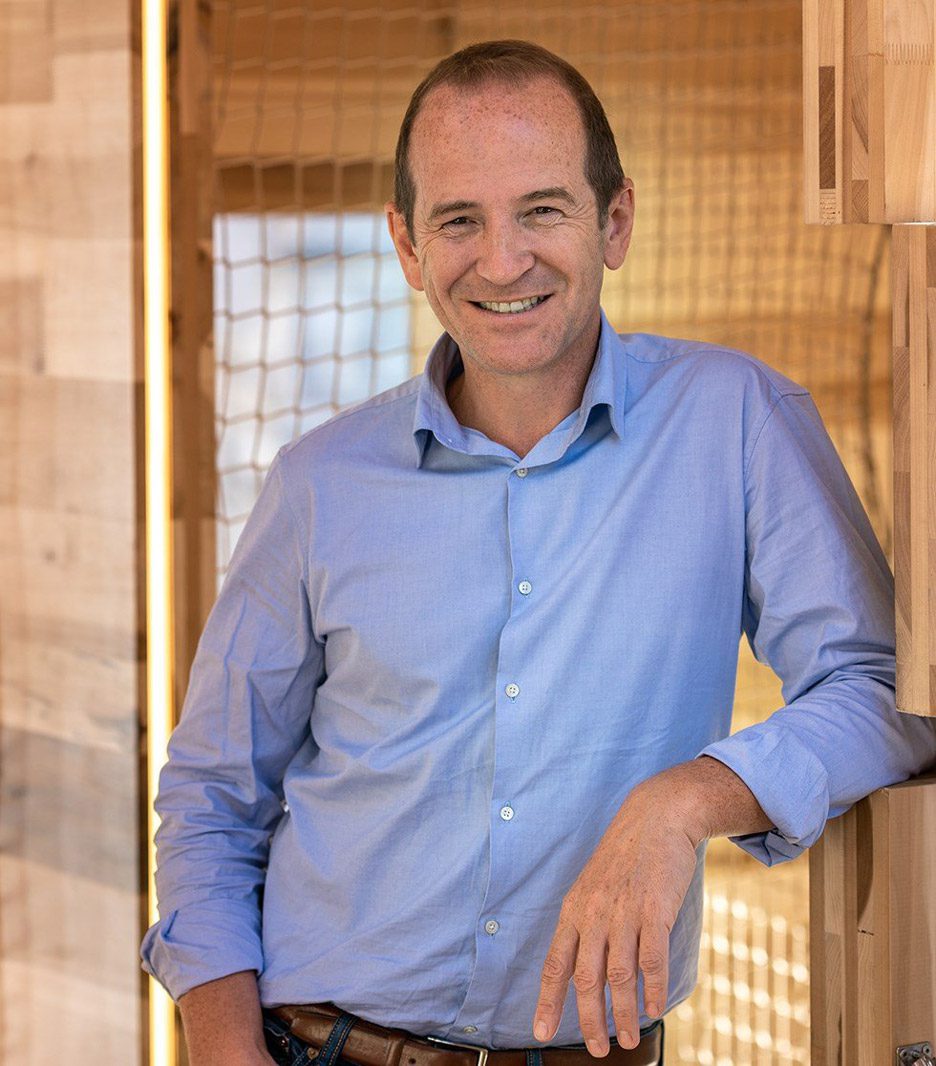
The authors of a RIBA report showing how construction can reduce its carbon emissions have urged people in the sector to endorse their findings to help pressure governments into taking action ahead of the COP26 climate conference.
"The more endorsements we can get, the more powerful that message is," said Maria Smith, editor of the Built for the Environment report published by the Royal Institute of British Architects and climate action group Architects Declare.
"We need people to go onto the website, sign up and endorse the report so that when it goes to government, it has thousands of signatures," added architect Andrew Waugh, who contributed to the report.

Waugh, who is a member of the Architects Declare steering group and co-founder of timber-construction specialist Waugh Thistleton Architects, said that governments are lagging behind the sector when it comes to decarbonising the built environment.
November's COP26 climate summit will be the first to recognise the built environment's huge contribution to global warming, with an estimated 40 per cent of global emissions coming from buildings and infrastructure.
Sector's climate aims "desperately need the support of government"
The summit will for the first time feature a Cities, Regions & Built Environment Day at which ideas for reducing these emissions will be discussed.
But Waugh said that governments have been slow to force the sector to reduce emissions due to its importance to the global economy.

"The 2015 Paris climate agreement was very much about the fact that industry wasn't ready," Waugh said. "They weren't going to push targets in construction because you know the world relies on construction so much to produce capital and employment."
"What's happened in the meantime is that the built environment sector has actually started out on its own pathway to transformational change," he added.
"But it does desperately need the support of government."
The report is set to be launched at the Built Environment Summit (BESt) at RIBA in London from 28 to 29 October when experts and thought leaders will explore how its recommendations might be realised.
Alongside a presentation of the report, the summit will see Cristina Gamboa, CEO of the World Green Building Council, environmental lawyer Farhana Yamin and Rice University professor Dr Timothy Morton give keynote speeches.
Report to be presented at COP26
Additional panel discussions centring on how the industry can achieve net-zero will also take place. The report will then be presented at COP26 in Glasgow next month.
It uses case studies submitted to an open call earlier this year to look at how buildings can play a role in tackling the climate and biodiversity emergencies.

"A key message is that we don't need to wait for breakthrough technologies," said Smith, who is director of sustainability and physics at Buro Happold, told Dezeen.
"We need to act now based on the technologies and the skills and know-how that we do have," she added. "Now, the challenge is how we scale that up."
The report identifies three main ways in which greenhouse gas emissions can be reduced in the built environment: making better use of existing buildings to reduce the demand for new construction, minimising the harmful environmental impact of new builds, and adopting long-term plans that put the health of the planet above short-term financial gains.
Sector "is committed to change"
Several standout case studies from completed buildings exemplify how these three ways can be used in practice.
The report acknowledges the massive contribution the built environment makes to climate change but says the sector "is committed to change" and "has the capability to transition to a sustainable future".
"There are enormous social, economic, health and wellbeing benefits to shifting to a sustainable built environment," it adds. But the report highlights the need for government support to make change happen.
"The role of governments is not only to provide the stick, it's not only regulation but also to provide the infrastructure," Smith explained.
"We're trying to say to governments that we have the materials, we have the skills, we have the tools but in order to roll this out, we need support around infrastructure, resources and public procurement. That's the key challenge," she said.
"Governments are still wrapped up in talking about operational carbon"
Waugh added that governments have so far focussed on introducing legislation to improve the energy efficiency of completed buildings but have neglected embodied carbon emissions caused by the construction process.
These can amount to half of all emissions caused by a building.
"This needs to change," he said. "I think governments are still wrapped up in talking about operational carbon [emissions caused by the building in use] but actually the western world is already really efficient at building efficient buildings."
"They need to be legislating for embodied carbon" he added. "They need to be legislating to retain existing buildings where possible."
The Built for the Environment report is just one of many initiatives from the architecture and construction sectors that will be presented at the COP26 conference.
British designer Es Devlin is set to unveil a temporary installation of 197 trees and plants to highlight issues related to climate change.
The UK Green Building Council will present a virtual pavilion showcasing projects and installations that offer solutions to the built environment's carbon emissions.
There are increasing concerns ahead of COP26 about governments' willingness to take tough action on climate.
Earlier this year, Hélène Chartier of international urban network C40 Cities told Dezeen that governments have made "very, very little" progress since the 2015 Paris Agreement.
However, UN climate champion Nigel Topping claimed the architecture sector was not doing enough to reduce emissions from buildings.
Around the same time, it emerged that less than six per cent of RIBA-registered architects had signed up to its initiative to design net-zero buildings.
Photography is by Jateed Lad.
Built Environment Summit will take place online and at RIBA London from 28 to 29 October 2021 ahead of COP26, which will take place at SEC Centre in Glasgow from 1 to 12 November 2021.
See Dezeen Events Guide for all the latest information you need to know to attend the event, as well as a list of other architecture and design events taking place around the world.
The post Climate initiatives "desperately need the support of government" say RIBA climate report editors appeared first on Dezeen.
from Dezeen https://ift.tt/3DnumDD
No comments:
Post a Comment